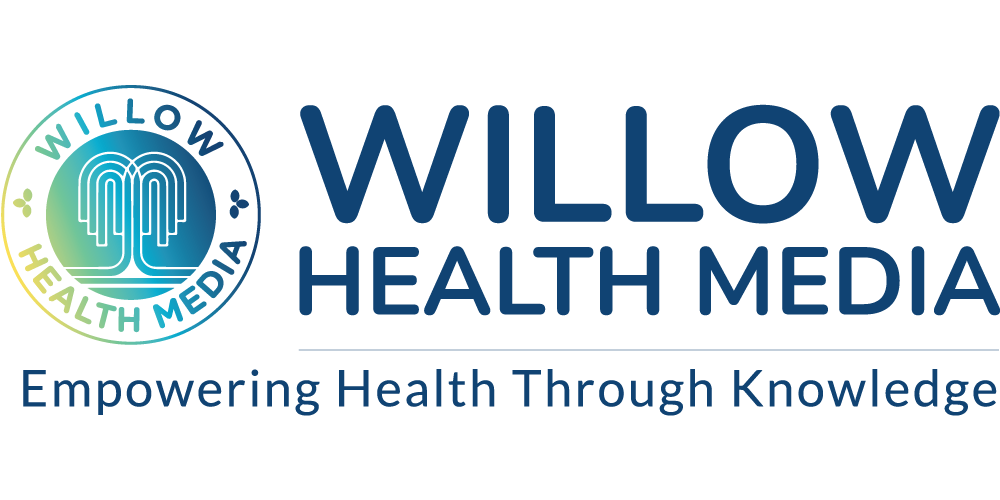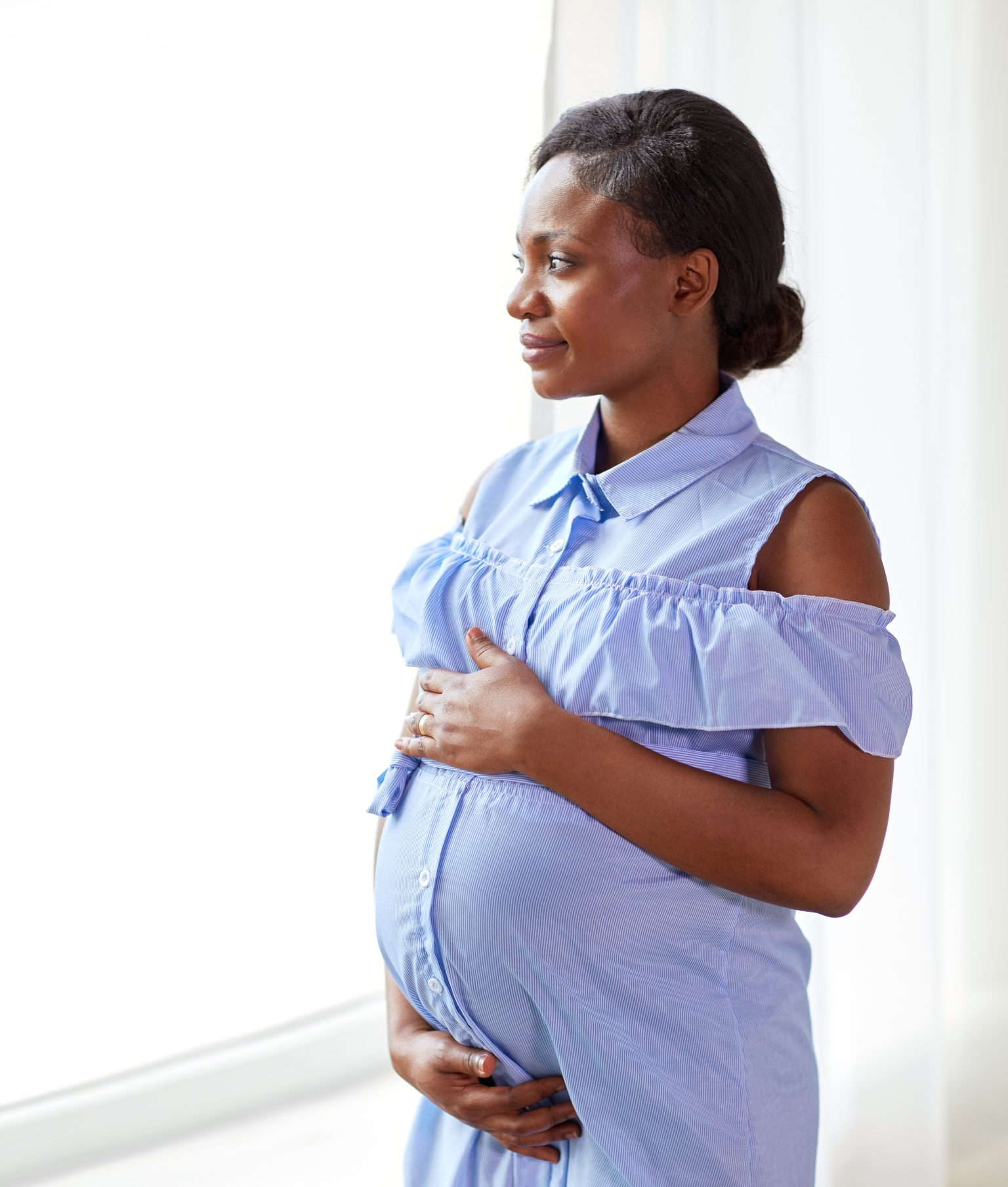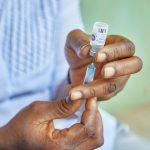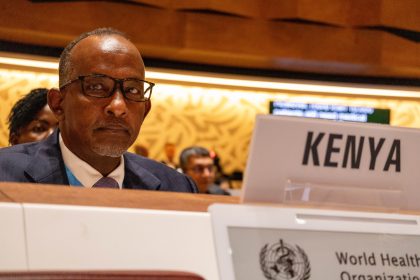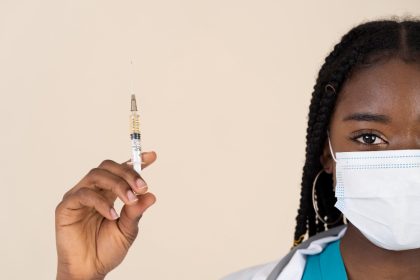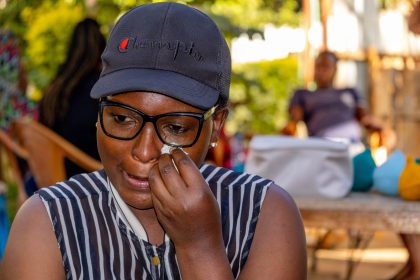The calibrated drape, for instance, is being used in Makueni County as a low-cost intervention in managing postpartum haemorrhage (PPH) while Kenya’s Prof Moses Obimbo is working on an AI driven diagnostic tool for assisting in premature and stillbirths.
During a recent women’s health roundtable, Bill Gates held up an innovative device – a blue plastic rectangle sheet with a clear, calibrated cone beneath it.
“That is a drape; when a woman is delivering, you put it underneath and you let this part (the cone shaped part), sit at the end of the table so that whatever blood is being lost accumulates in the cup here,” he said.
The calibrated drape Gates was describing is made in Africa as a low-cost intervention in accurately measuring blood loss after childbirth and particularly for detecting and managing postpartum haemorrhage (PPH).
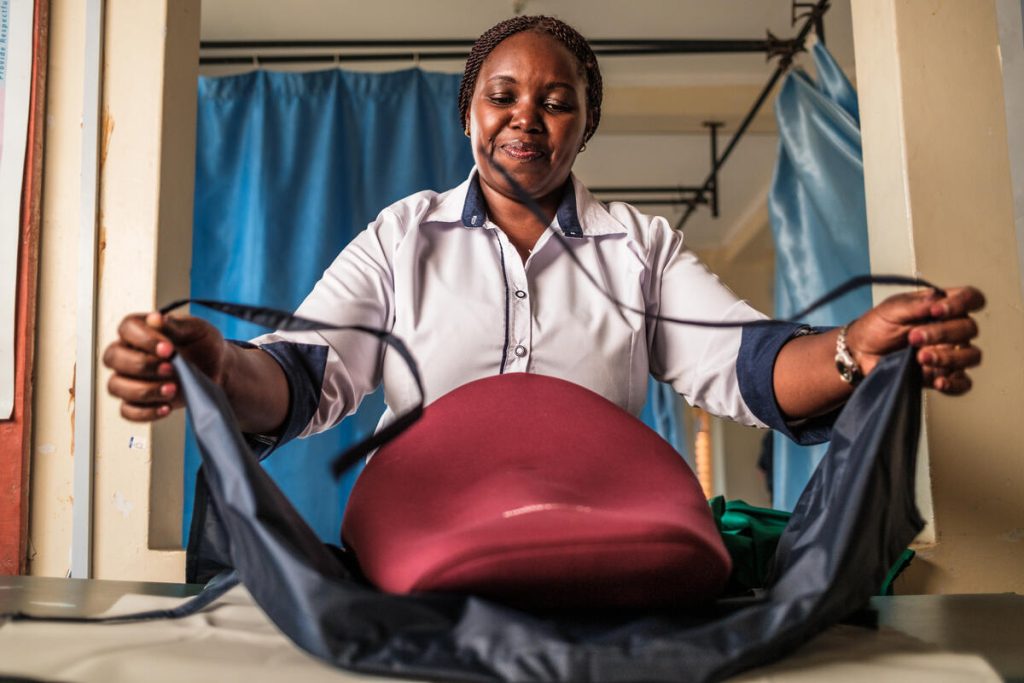
“When we first did it, it cost $2.50 (Ksh323) and now it is made by a partner in Africa for a dollar (Ksh129),” he said.
The calibrated drape was introduced as part of a Gates Foundation-funded program E-Motive in 2019 which bundled different interventions towards addressing post-partum haemorrhage.
Gates was speaking at an event dubbed Women Unstuck, shortly after his foundation announced $2.5 billion (Ksh323 billion) in funding to support research in women’s health.
The funding will target five specific areas including improving gynaecological and menstrual health, expanding contraceptive options, addressing sexually transmitted infections, improving maternal health, and gut health and nutrition. It is set to focus on low-cost innovations in low- and middle-income countries.
Only one per cent of healthcare research and innovation is invested in female-specific conditions
The five areas targeted by the funding for research in women’s health, according to Dr Anita Zaidi, the President of Gender Equality Division at the Gates Foundation, are ignored for funding from a research and development perspective.
“They have a huge burden around the world and in the next five years, we feel that these are innovations that can be accelerated to make them available and accessible to women around the world,” she said during the launch of the funding.
According to the Gates Foundation, women’s research is underfunded, under-researched and underserved. This position is shared by McKinsey & Company whose 2021 analysis found that only one per cent of healthcare research and innovation is invested in female-specific conditions and beyond oncology.
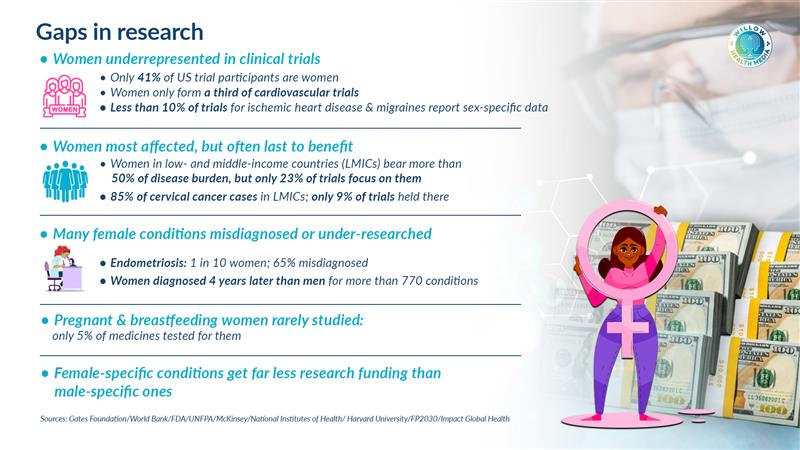
This is also evident in the funding directed to late-stage clinical development which received just seven per cent in 2023, while over half of all sexual and reproductive health research and development funding went to basic research.
Yet the realities, especially in low- and middle-income countries remain stark. Wealth related inequalities and access to sanitary pads are the main drivers of period poverty, according to a study which looked into the state of menstrual hygiene in eight low- and middle-income countries in 2022.
In Kenya, a policy brief by the International Centre for Reproductive Health-Kenya (ICRH-K), found that adolescent girls “face significant challenges in managing their menstrual health and hygiene, stemming from inadequate knowledge, limited access to menstrual products and hygienic facilities, and ensuing stigma.”
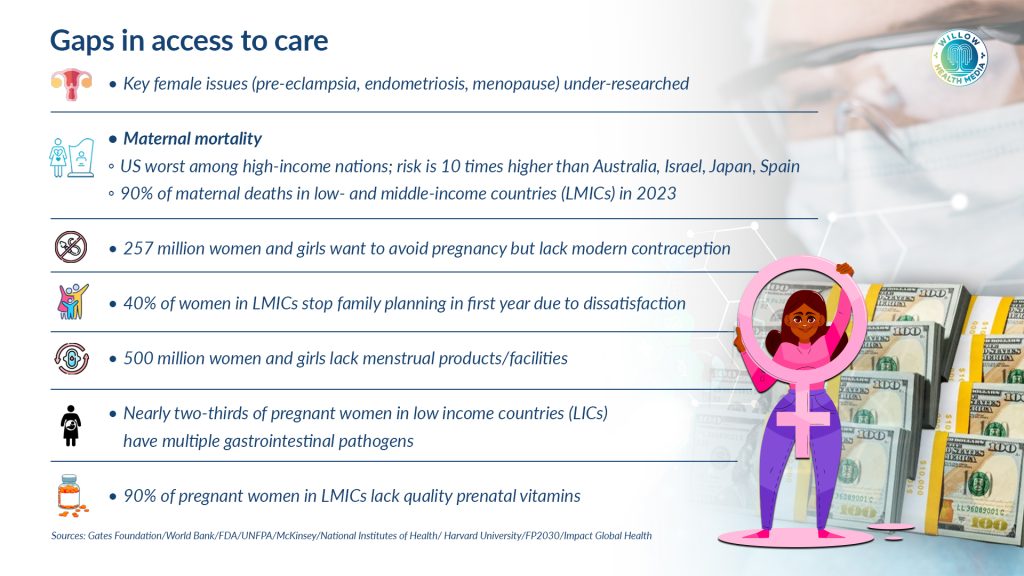
On contraceptives, which is another key area for the funding, studies have shown a high unmet need for contraceptives in Africa, with the prevalence of use being quite low. In 2023, funding for contraceptive research and development dropped by $20 million (Ksh2.5 billion), according to Impact Global Health.
The low prevalence in use of contraception then leads to unintended pregnancies, sexually transmitted infections and social and economic hardships. Specifically, the prevalence of three curable STIs – chlamydia, gonorrhoea, and trichomoniasis in sub-Saharan Africa is high.
Low-cost, durable, reusable, wireless labour monitoring solution is another innovation
Challenges with maternal health and nutrition are still high. As of 2023, sub-Saharan Africa had 454 maternal deaths per 100,000 births, accounting for 70 per cent of global maternal deaths.
Maternal deaths are often caused by postpartum haemorrhage, pre-eclampsia and hypertensive disorders, pregnancy-related infections, and complications of unsafe abortion. All these conditions are what the Gates Foundation seeks to address through the innovations it is funding.
Besides the Calibrated Drape, Gates hoped that ultrasound devices will in future be available in primary care facilities for various uses including in lung and breast cancer, but most importantly in the present as part of understanding pregnancy risks.
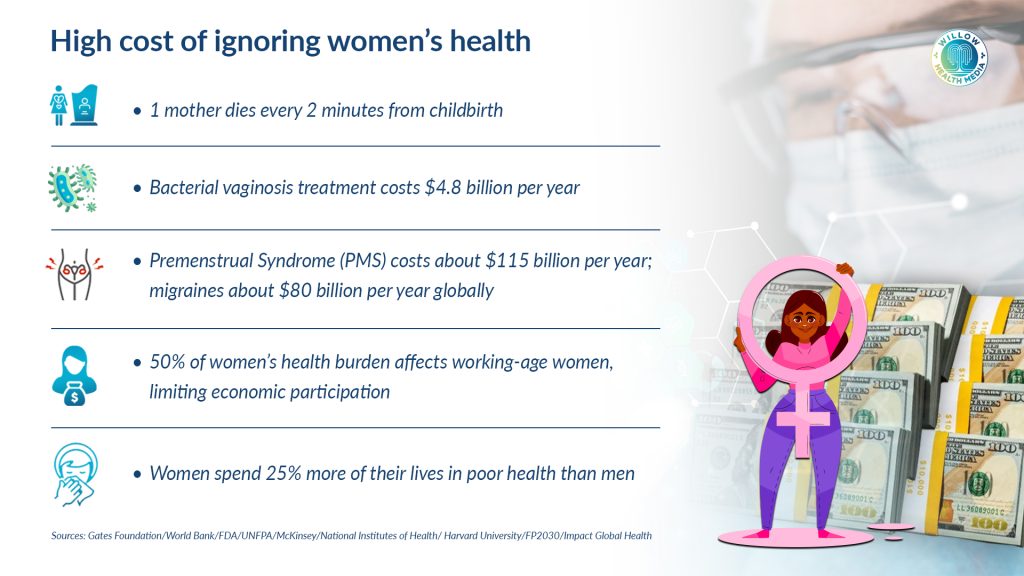
“If you are in a rural area and you aren’t near enough to a site that can give you a C-section, say you have obstruction or problems with the cord, the ultrasound scan combined with the massive amounts of data that we have gathered about abnormal and normal pregnancies, you can do the risk reading,” he said.
Low-cost, durable, reusable, wireless labour monitoring solution is another innovation that Gates spoke about. “Our partners at Northwestern University are working on these very inexpensive digital sensors that report the data into the nurse’s cellphone or monitoring station and it is continuous,” he said.
Gates said the labour monitoring device is still being developed and lauded its cost, lack of complexity and richness of data. “It is wonderful to see it in this Nigerian hospital and it will get down to other levels of care because of the reduced costs and ease of use,” he said.
Developing tools to predict chances of a mother getting a premature baby, death in womb
The $2.5 billion (Ksh232 billion) funding will focus on such low-cost initiatives like the one Kenyan Prof Moses Obimbo, a lecturer at the University of Nairobi is already working on. His innovation is a diagnostic tool that will deploy artificial intelligence (AI) to assist early diagnosis of premature and stillbirths, with support from the Gates Foundation.
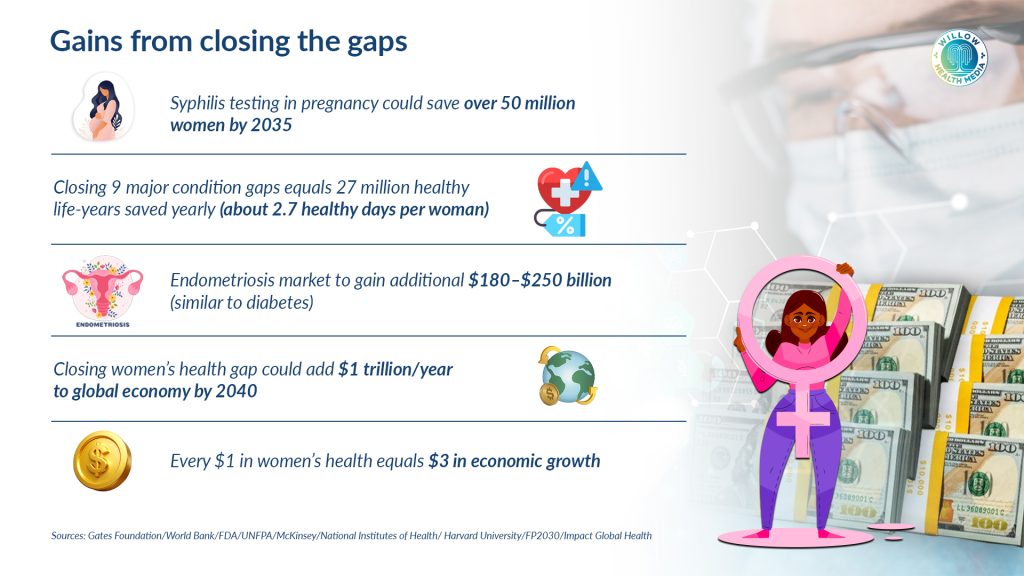
“We are trying to develop tools that will be able to predict chances of a mother getting a premature baby or getting a death of a baby within the womb before they actually deliver stillbirth, and those who do not grow as per the spectrum,” he said, during the launch of the funding.
Stillbirths are still a big challenge in sub-Saharan Africa. According to the United Nations Children’s Fund (UNICEF), the region accounted for 50 per cent of global stillbirths in 2022, with a rate of 22.2 stillbirths per 1,000 total births.
Given the current diminished aid environment with the US government cutting funding, most of which affected women’s health, Gates said that the next three or four years are important in getting costs of innovations down.
“As you get to a ten-year period, we will be able to get maternal deaths down partly by funding these low-cost innovations,” he said.
